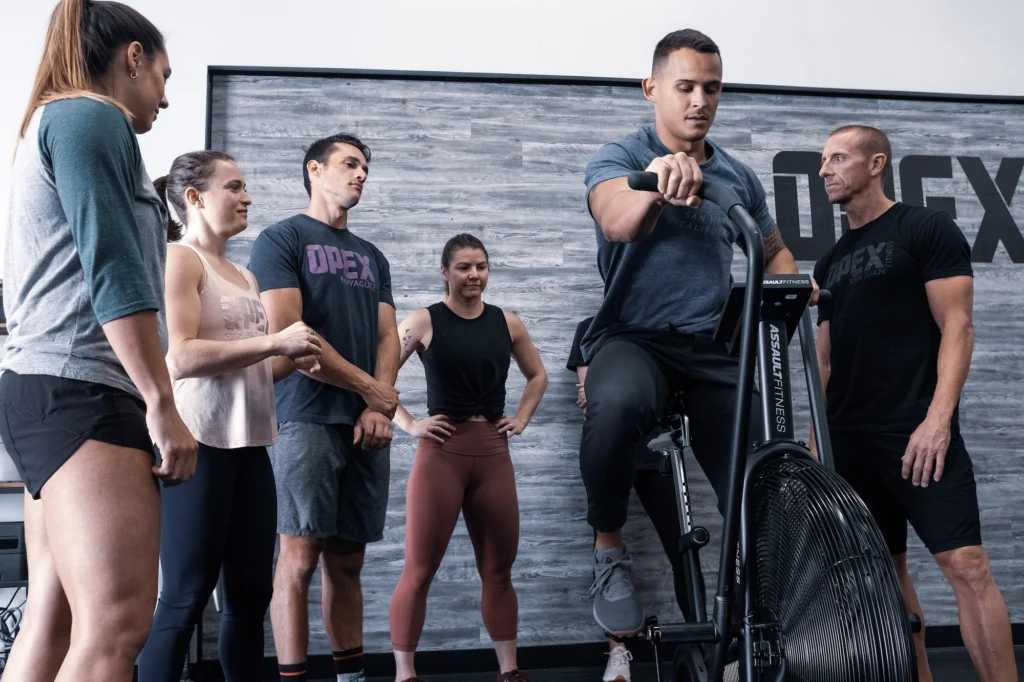Coaches Corner With Carl Hardwick: The Best Way To Increase Aerobic Capacity

Is it better to go long and slow or short and fast to increase aerobic capacity? Here’s a simple framework you can follow
There are a lot of varying thoughts out there on how we should approach aerobic training to improve our aerobic capacity. Opinions are split between specific zones, aerobic implements, work-rest ratios, long and slow advocates, short and fast advocates, and more. In this article, I want to make the case that they’re all right and we should take something from each camp to build an aerobic system that will last.
First, I have to point out that there’s something called diminishing returns when it comes to any type of training. There are risks associated with excessive aerobic work, such as the potential for cardiac hypertrophy, decreased chamber size, high blood pressure and even heart failure. It’s important to take a simple, principle-based approach to improve aerobic capacity, which includes:
- Building a large aerobic base through long and easy aerobic work
- Challenging that aerobic base through more intense aerobic work
The case for slow & easy
Slow, easy aerobic work and more intense aerobic work are both effective in improving aerobic capacity. Slow, easy aerobic work increases mitochondrial density and capillary supply, leading to greater oxygen delivery to the muscles. Additionally, it improves the body’s ability to use oxygen for energy production, which is important for aerobic, anaerobic and resistance training.
There are also a number of non-physiological benefits of implementing long and slow aerobic work. First, slow aerobic work teaches us to be patient. It teaches us to stay focused, not to be in a hurry, to delay gratification, to stay committed to the task at hand as well as to the long-term goal, and, finally, the importance of consistency. In my opinion, if we could increase those characteristics as a society, we’d be much better off.
The case for fast & powerful
Too many people jump right to this part of the aerobic continuum. They do it because they lack patience, want instant gratification, are looking for a shortcut, think they “don’t have time” and just want their daily hit of cortisol. Let me be clear: I’m a proponent of intense aerobics, but I’m a bigger proponent that we should earn our work. Before we earn this type of training, we must first develop an aerobic base.
What’s the benefit of more intense aerobic work? It stimulates the heart to pump more efficiently, leading to increased stroke volume and cardiac output. This means that the heart is able to pump more blood per beat, resulting in more oxygen delivery to the muscles. When you hear the term “aerobic capacity,” you’re probably thinking about this type of work.
How to implement in your practice
A simple, principle-based approach to improving aerobic capacity is the best option for our clients. It’s important to focus on building a solid aerobic base and challenging that base with appropriate intensities to create adaptations and improve overall health and fitness. A large aerobic base provides a foundation for all other types of work across the energy system spectrum.

At OPEX, we use the Maximum Aerobic Power (MAP) Continuum as our progressive aerobic model. It progresses from MAP 10 to MAP 1 with specific time frames for work, rest and guidelines for the number of sets. It’s a type of aerobic training that focuses on improving an individual’s maximal aerobic power. The work and rest period ratios combined with measurement are key aspects of the training that validate the repeatability of the work performed. Exercise selection is based on ability, training age and the assessment.
| MAP | Work |
| 10 | Varied |
| 9 | 30 min |
| 8 | 15 min |
| 7 | 10 min |
| 6 | 5 min |
| 5 | 3 min |
| 4 | 2 min |
| 3 | 90 sec |
| 2 | 60 sec |
| 1 | 30 sec |
To implement this approach, coaches should start with low-intensity, long-duration aerobic work that is cyclical in nature (walking, running, rowing, biking, etc). As the client learns their gears (we use 8 weeks per MAP as a starting point), coaches can gradually increase the intensity of the aerobic work by moving them down the MAP Continuum. It’s important to monitor the client’s ability to sustain paces and adjust the program design as needed to ensure that they are making appropriate progress and avoiding excessive stress. As your client progresses through the aerobic continuum, they’ll go from long and easy to short and powerful.
When dosed appropriately, easy aerobic work and more intense aerobic work are both effective in improving aerobic capacity. By sticking to the principle of first building an aerobic base and then challenging it by increasing intensity, coaches can use both styles of training to increase health and fitness.
See Carl’s previous column here.
Next week’s column: Professionalizing Coaching – How To Turn Your Passion Into a Paycheck
Carl Hardwick, CEO of OPEX Fitness & CoachRx is a strong advocate for bringing honor to the coaching profession and raising the value of all fitness coaches. He lectures frequently about program design, business systems, and building a sustainable coaching career. Follow him on Instagram @hardwickcarl and OPEX Fitness on YouTube



